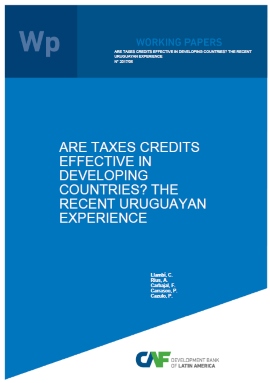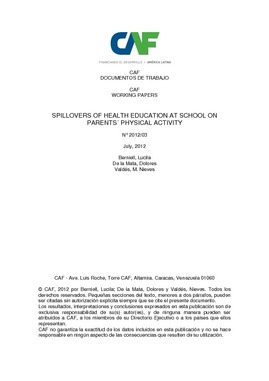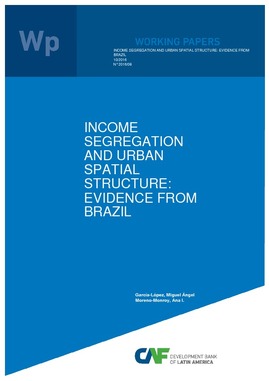Mostrar el registro sencillo del ítem
Difference-in-Differences in Equilibrium: Evidence from Placed-Based Policies
| dc.contributor.author | Alves, Guillermo | |
| dc.contributor.author | Burton, William H. | |
| dc.contributor.author | Fleitas, Sebastián | |
| dc.coverage.spatial | América Latina y el Caribe | es_ES |
| dc.date.accessioned | 2023-12-26T14:27:44Z | |
| dc.date.available | 2023-12-26T14:27:44Z | |
| dc.date.issued | 2023-12-26 | |
| dc.identifier.citation | Alves, G., Burton, W. H., & Fleitas, S. (2023, December 26). Difference-in-Differences in Equilibrium: Evidence from Placed-Based Policies. Distrito Capital: CAF- banco de desarrollo de América Latina y el Caribe. Retrieved from https://scioteca.caf.com/handle/123456789/2192 | en_GB |
| dc.identifier.uri | https://scioteca.caf.com/handle/123456789/2192 | |
| dc.description.tableofcontents | Violations of the stable unit treatment value assumption (SUTVA) are a common threat to identification of the effects of policies causing the resorting of agents between treated and untreated groups. We show that in such contexts the difference-in-differences estimator can be decomposed into three effects (autarky, resorting and contamination). We also show that demand and supply elasticities are “sufficient statistics” for the relative size of these effects and that there exist a trade-off in terms of heterogeneity between SUTVA and parallel trends assumption violations. We illustrate our argument by studying a large placed-based tax break for the construction of residential housing in Uruguay. First, we obtain a series of difference-in-differences estimates of the effect of the policy on housing prices and show that they differ considerably depending on the degree of heterogeneity between subsidized and unsubsidized areas. Consistent with our conceptual framework, prices fall substantially when comparing heterogeneous areas, and very little or not at all when comparing similar areas. Second, we estimate a structural model of supply and demand for neighborhoods that rationalizes those different estimates and allows us to recover the three effects as well as the welfare impact of the policy. Overall, we find that SUTVA violations account for 25% of the effect on subsidized areas and lead to a sizable underestimation (24 p.p.) of the incidence of the tax break on subsidized areas. | es_ES |
| dc.language.iso | en | es_ES |
| dc.publisher | CAF- banco de desarrollo de América Latina y el Caribe | es_ES |
| dc.rights | CC-BY-NC-ND | es_ES |
| dc.rights.uri | http://creativecommons.org/licenses/by-nc-nd/4.0/ | es_ES |
| dc.subject | Banca de desarrollo | es_ES |
| dc.subject | Infraestructura | es_ES |
| dc.subject | Vivienda | es_ES |
| dc.title | Difference-in-Differences in Equilibrium: Evidence from Placed-Based Policies | es_ES |
| dc.type | workingPaper | es_ES |
| dc.publisher.city | Distrito Capital | es_ES |
Ficheros en el ítem
Este ítem aparece en la(s) siguiente(s) colección(ones)
-
6.1 Documentos de trabajo en investigación socioeconómica
En esta colección se encuentran los documentos de trabajo sobre temas económicos y sociales prioritarios para la región.





